featured
How Genomics is Shaping the Future of Cannabis Breeding
Published
6 days agoon

By Angela Bacca
Cannabis breeders have notoriously been reclusive and secretive, primarily as a byproduct of Prohibition. While the last century has pushed many mainstream agricultural commodities towards a more narrowed genetic pool to support monocropping and mass production, cannabis genetics were shaped by a global underground cottage market comprised of small-scale grower-breeders, smugglers, and seedbanks that resulted in the variety that cannabis consumers have come to expect. Genetic sequencing and research are now rapidly reshaping cannabis cultivars as legalization pushes production into mainstream agricultural markets, yet cannabis is now following a very different path than agricultural commodities like corn and soy. While there is still lingering distrust with these new technologies and the motivations that fuel them, some cannabis breeders are not only starting to embrace these new technologies but are also teaching them alongside traditional cannabis breeding practices.
“Cannabis breeding isn’t just cannabis breeding anymore,” says James Loud, a former professional chef turned 25-year cannabis breeder and connoisseur, who has recently worked with geneticists, Amsterdam and North American seed companies, and well-known cannabis breeders and researchers to bring traditional breeding practices to the mainstream. “Now it’s genetic preservation, drug discovery, and breeding old varieties to increase heterosis and hybrid vigor; it’s about studying the plant more than we ever have.”
Loud is now actively working to mainstream and merge traditional practices with new technologies, like genetic sequencing and tissue culture, through his 2023 book Cannabis Breeding: The Art and Science of Crafting Distinctive Cultivars and a course through Oaksterdam University.
Genetic sequencing has rapidly accelerated modern understanding of plant breeding and medicine in the 21st century, but it hasn’t been without scandal and controversy. In some cases, the controversy is fueled by fears that arise from a misunderstanding of the scientific complexities, but in others, the distrust is warranted due to bad business practices.
Commercial genetic sequencing—for plants, humans, and even pets—has become low-cost and ubiquitous. While these tests provide interesting insights, like ancestry and relation to other plants or animals, they generally serve a greater purpose, which is to amass a larger sample of data that helps decode genomics and identify genetic markers associated with disease and traits. For humans, this means identifying genetic markers associated with predisposition to disease and, one day, potentially preventing it or editing it out entirely. For plants, like cannabis, this means creating cultivars that produce specific phytochemical profiles, are pest and disease-resistant, high-yielding, flavorful, and just about anything humans desire.
Collecting and sequencing the number of samples required to fuel major genomic discoveries is expensive, and those expenses have become the root of scandal and controversy for both human and plant genomics, slowing down the pace of discovery and stoking distrust.
“The real value of aggregated genetic information is correlating what you know about the genetic information with what you know about traits and physiology, and that kind of thing is how you really begin being able to interpret the genome,” says Dale Hunt, PhD, JD. Hunt is a plant biologist and patent attorney who works closely with the cannabis breeding community through his company, Breeder’s Best, to help breeders protect and commercialize their cultivars.
Earlier this year, attorneys general in many states began issuing urgent warnings to human genetic sequencing company 23andMe customers to delete their data. The California-based company provides low-cost consumer ancestry and genetic tests from small test tubes of saliva that often return stunningly accurate ancestry information, identify the likelihood of genetic traits, and match people to relatives all over the world. Initially, the goal was to fuel discovery that could improve human health. However, when limitations were imposed by the FDA, the company found itself unable to sustain its operations on these tests alone, first leveraging a partnership with pharmaceutical giant GlaxoSmithKline in 2018 and then spiraling into the 2025 bankruptcy that fueled the panic earlier this year. The fear was that the bankruptcy would place the company’s massive genetic database into the hands of whoever could pay the most for it, which could have devastating impacts on customers.
“That really polarized 23andMe’s business plan of putting the customer first, and now they were in emergency mode. They knew they couldn’t survive off ancestry tests alone,” says Kevin McKernan. McKernan was part of a team at the Massachusetts Institute of Technology that helped sequence the full human genome through the collaborative Human Genome Project in 2000. Today, his company, Medicinal Genomics, focuses on cannabis genomics.
The cannabis industry experienced a similar fallout in 2019 when a video of Phylos Bioscience co-founder Mowgli Holmes speaking to an investor conference in Florida stirred up a wave of animosity from the cannabis breeding community and fears of a Big Ag takeover. Since the sequencing of the whole cannabis genome in 2013, Phylos has rocketed the industry’s understanding of cannabis plant relationships and ancestry out of the darkness of Prohibition into the realm of science. Their work made it possible to begin unraveling the mysteries of how the plant evolved into what it is today through clandestine seed smuggling and eventually commercial seed banks.
While many commercial cannabis breeders and producers were quick to send in samples of their genetics and begin the work to demystify the cannabis genome, many more remained distrustful and were enraged by Holmes’s comments. However, many of the community’s fears about what Phylos could and was doing with genetic sequencing data never played out: Monsanto did not come in and use their data to steal and patent genetics, and Phylos didn’t (and couldn’t) recreate breeders’ genetics from the samples they collected. Like 23andMe, the controversy led to a pivot, but one that has instead led to major genetic discoveries that have been shared to further other researchers.
“They aren’t hoarding [what they learn] and keeping it a secret; they are sharing it with the community,” says McKernan of Phylos’s recent breeding research.
While human genomic sequencing and research have been rightfully constrained by ethics, cannabis isn’t hampered in the same way, which has accelerated innovation in breeding.
“In humans, platforms like 23andMe have to rely on undirected population datasets to pull out correlations between genetic data and traits. In plants, we can take a much more direct route. The difference is that in plants, we can design controlled crosses that measure direct outcomes in a targeted way. In humans, you can’t control who reproduces with whom (thankfully), so you’re stuck mining random variation in the general population for statistical signals. That makes plant marker discovery much more efficient,” says Alisha Holloway, Chief Scientific Officer of Phylos Bioscience.
And what researchers at Phylos Bioscience and Medicinal Genomics are now contributing to cannabis genetics is profound.
Phylos Bioscience contributed the greatest research so far in untangling the secrets of the traditional cannabis market when they produced the Phylos Galaxy, an interactive map that displayed cultivar relationships through stars (sequences of individual cultivars) and constellations (colorful lines connecting them to their families). Like 23andMe, this map’s accuracy was built on an unrivaled sample set before many commercial breeders even began to submit their samples. The Galaxy blew up one of the most pervasive myths in the cannabis world: “strain names” truly meant next to nothing, as a search for popular names like “Blue Dream” brought up samples both closely related and unrelated across the Galaxy. For the first time, some of the lies, secrets, and myths of the cannabis family tree were being exposed—just like 23andMe was doing for humans.
“The Phylos Galaxy started with a very diverse set of samples, which provided a broad view of cannabis genetics. Over time, the picture that emerged was shaped by what people were actually growing and selling, so commercial varieties were heavily represented. We also worked hard to include landrace accessions, because those lines carry unique diversity and traits that commercial plants often lack. Landrace varieties may hold resistance to disease, or entirely different chemical profiles, and including them meant the Galaxy showed a more complete picture of diversity, even if we didn’t know what traits that diversity represented,” says Holloway. “That dynamic led to one of the Galaxy’s most important insights. Cannabis varieties that survived in the market were the ones that met two conditions: they had to create a great experience for consumers, and they had to work economically for cultivators. Without agronomic traits like yield, vigor, or pest resistance, no variety could succeed at scale, no matter how amazing the effects were. The sales price doesn’t always scale with the effort to grow a cultivar. Those high-cost-to-grow plants usually stayed in personal head stashes instead of being grown commercially. Breeders are now revisiting those varieties with unique effects and are able to incorporate better agronomic traits. The great thing is that we’re bringing growers better plants while maintaining the diversity of aromas and effects for consumers.”
“By making this visible, the Galaxy showed how market forces shape genetic diversity. It helped explain why certain varieties took over, why others disappeared, and how the industry was filtering plants to balance consumer demand with grower profitability. At the same time, it revealed how untapped diversity could be harnessed to create new possibilities for the future. The Galaxy also gave breeders a way to understand the genetic background of the plants they were working with. Sometimes crossing very different backgrounds produces novel phenotypes, and the Galaxy lets people see those opportunities before making breeding decisions. By making the results public, we not only supported research and defended against patents, but we also gave breeders a way to connect, share knowledge, and collaborate more effectively.”
Holloway says that by giving cultivators a way to verify the uniqueness of their cultivars and understand their pedigrees, the Galaxy provided clarity in the market where “strain names” had come to mean almost nothing. What it didn’t do was allow the company to associate traits with the genetic map, identify new genetic markers, nor did it allow them to recreate, or clone, new plants from the data.
“The Galaxy was a diversity map, not a breeding engine,” Holloway says.
While many of the fears that underlie the mass deletion of consumer data from 23andMe, the same scenario never actually played out in cannabis. Sequencing and patenting did not limit genetic diversity, and instead, companies like Medicinal Genomics and Phylos Bioscience, along with breeders commercializing their varieties through companies like Dale Hunt’s Breeder’s Best, the cannabis plant has diverged heavily from mainstream agriculture in that sequencing has largely supported targeted breeding—not genetic modification—and is leading to improved and enhanced commercial varieties.
McKernan points to research Medicinal Genomics has been doing to understand the cannabis plant’s microbiome (similar to the human gut microbiome) and how it affects yield and should inform more “common-sense” safety testing in commercial markets.
“I think we’re going to see over time that getting the microbiome right in your plant and the genetics of your plant right means you’re going to get better yield, higher pass rates, and probably better quality flower,” McKernan says.
He also points to genetic research conducted by Zamir K. Punja, who has been able to identify that cultivars that tend to turn purple may also have a higher natural resistance to hop-latent viroid, which has devastated some commercial markets
Despite these advances, one of the industry’s most pervasive goals with genetic sequencing has remained, and will remain, elusive: correlating effects with cultivar (or strain) names. Some of the best-funded ancillary cannabis companies—like Leafly.com—were premised on the possibility that this could be done, and many in the industry felt genetic sequencing would finally allow these names to be associated with effects and unravel the medical mysteries and genetic potential of specific cultivars, placing disproportionate value on individual cultivars themselves as opposed to the plant’s whole genomic possibility. The reality of what can and can’t be discovered with plant genetics, and how, has shaped the reality of genetic marker-assisted breeding.
For now, McKernan, Holloway, and Hunt all agree that the concept of associating specific cannabis genetics with effects in humans is unlikely.
“Effect is subjective,” says Hunt. “It’s reported by user, and different user experiences can be different, even with the same user and the same variety of cannabis. Also, I don’t think we know enough yet to know that a particular effect always comes from a particular phenotype,” Hunt says.
“It is possible to find genetic markers for specific compounds, like THCV, and then make some predictions about the effects a variety might have. The bigger issue is that we still have not fully mapped which combinations of compounds in cannabis are responsible for which effects. Cannabinoids are only part of the picture. There are hundreds of other molecules at play, and their interactions matter. THCV, for example, often produces an energizing, motivating effect, but just knowing that a plant has the genetic potential for THCV does not tell you how it will interact with other compounds to produce different effects. We also are just beginning to understand why some people have very different experiences with the same products, which remains one of the deeper mysteries of cannabis.” Holloway says.
“We’re a bit of a ways off only because we don’t have good studies on human genetics and cannabis use,” says McKernan, although he points to small strides made by researchers like Ethan Russo, PhD, who demonstrated specific genetic markers in people more susceptible to cannabinoid hypermesis syndrome. Medicinal Genomics has focused on plant microbiome research that could reshape how state-mandated safety testing is conducted, refine cultivation practices, and increase yields.
Phylos is focusing on traits that allow cultivators to grow at scale efficiently while also creating a reliable consumer experience, such as high yields, strong potency, complex and interesting aromas, rare cannabinoids, distinctive color variations, clone-like uniformity, and stress tolerance. They have worked extensively with autoflowering genetics, reshaping them so that they flower quickly regardless of light period, but also are higher potency, higher yield, taste and smell better, and have more bag appeal.
“All of our research funnels into varieties where these traits are not just present but fixed and reliable,” Holloway says. “One example is our work with THCV. By using genetic markers that we discovered, we were able to upregulate THCV from about 4 percent to as much as 20 percent, which was an early demonstration of how targeted breeding can create real breakthroughs. This type of work allows growers to bring plants with unique effects to market, which brings profit to the growers and provides consumers with new options.”
Hunt points out how marker-assisted breeding has taken a radically different path for cannabis than for other mainstream agricultural commodities. Mainstream agriculture typically breeds for a few distinct traits based on mass production for a limited number of end uses. As a result, commercial cultivars for commodities such as corn and soy are not genetically diverse. The human demands on the cannabis plant are pushing cannabis breeding in many directions, not just toward the highest yields.
“If we had more corn connoisseurs, we would probably have more diversity in commercial corn,” says Hunt. “The thing is, with cannabis, there was always more diversity [than traditional agriculture] because we are asking the plant to do more things. The diversity of the uses of the plant creates a floor for how much uniformity there could be genetically, because if you have pure genetic uniformity, you’re not going to be able to address a lot of the different uses of cannabis.”
Hunt says that while traditional cannabis breeders were generally breeding for the same traits—such as yield and THC production—marker-assisted breeding is allowing for rapid reshaping of cannabis cultivars.
Hunt contributed a chapter to James Loud’s Cannabis Breeding book about intellectual property and plant diversity. As a plant patent attorney, he can speak to both the fears that arose when genetic sequencing took hold in cannabis and how many of those fears aren’t playing out in reality.
“I don’t think patenting necessarily limits diversity, but it correlates with business purposes that don’t necessarily place a high value on diversity,” Hunt says. And, as he points out, cannabis consumers are demanding so many different things from cannabis that it would be difficult to obtain, enforce, and profit from single monocropped cultivars.
For his part, James Loud plans to keep pushing breeders to merge their traditional knowledge with these new technologies to advance cannabis breeding.
“The future is bright, and it’s all going to come back to genetics,” Loud concludes.
Angela Bacca. MBA, began covering the cannabis industry as a student journalist in San Francisco in 2006. Since then, she has authored hundreds of articles and edited, managed, and/or co-authored over a dozen books, mostly on cannabis horticulture and medicine, in addition to editing and managing various cannabis-centric digital and print magazines. Her work has focused on cannabis economics, politics, science, horticulture, cultural issues, non-cannabis herbalism, and complementary and alternative health topics. She is the Director of Academics at Oaksterdam University.
Photo by Google DeepMind on Unsplash
This article is from an external, unpaid contributor. It does not represent High Times’ reporting and has not been edited for content or accuracy.

Author: mscannabiz.com
MScannaBIZ for all you Mississippi Cannabis News and Information.
You may like
-


FDA Weighs Petition On ‘Significant Harm’ Of Marijuana Hair Testing Device’s Positive Results From Secondhand Smoke
-
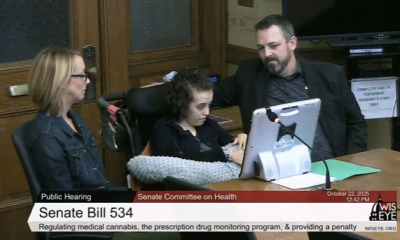

Wisconsin Lawmakers Rally for Medical Cannabis Legalization in Committee Hearing
-


Massachusetts Campaign To Roll Back Marijuana Legalization Law Is ‘On Track’ To Make 2026 Ballot, Spokesperson Says
-
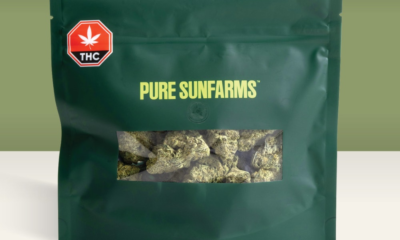

Village Farms Introduces Industry-First, One-Way Aroma Valve in Cannabis Packaging
-


Ohio House Passes Bill To Remove Voter-Approved Marijuana Legalization Protections And Restrict Hemp Market
-


Sorting Robotics Becomes Cannabis Manufacturing’s First True Systems Integrator
featured
FDA Weighs Petition On ‘Significant Harm’ Of Marijuana Hair Testing Device’s Positive Results From Secondhand Smoke
Published
8 hours agoon
October 22, 2025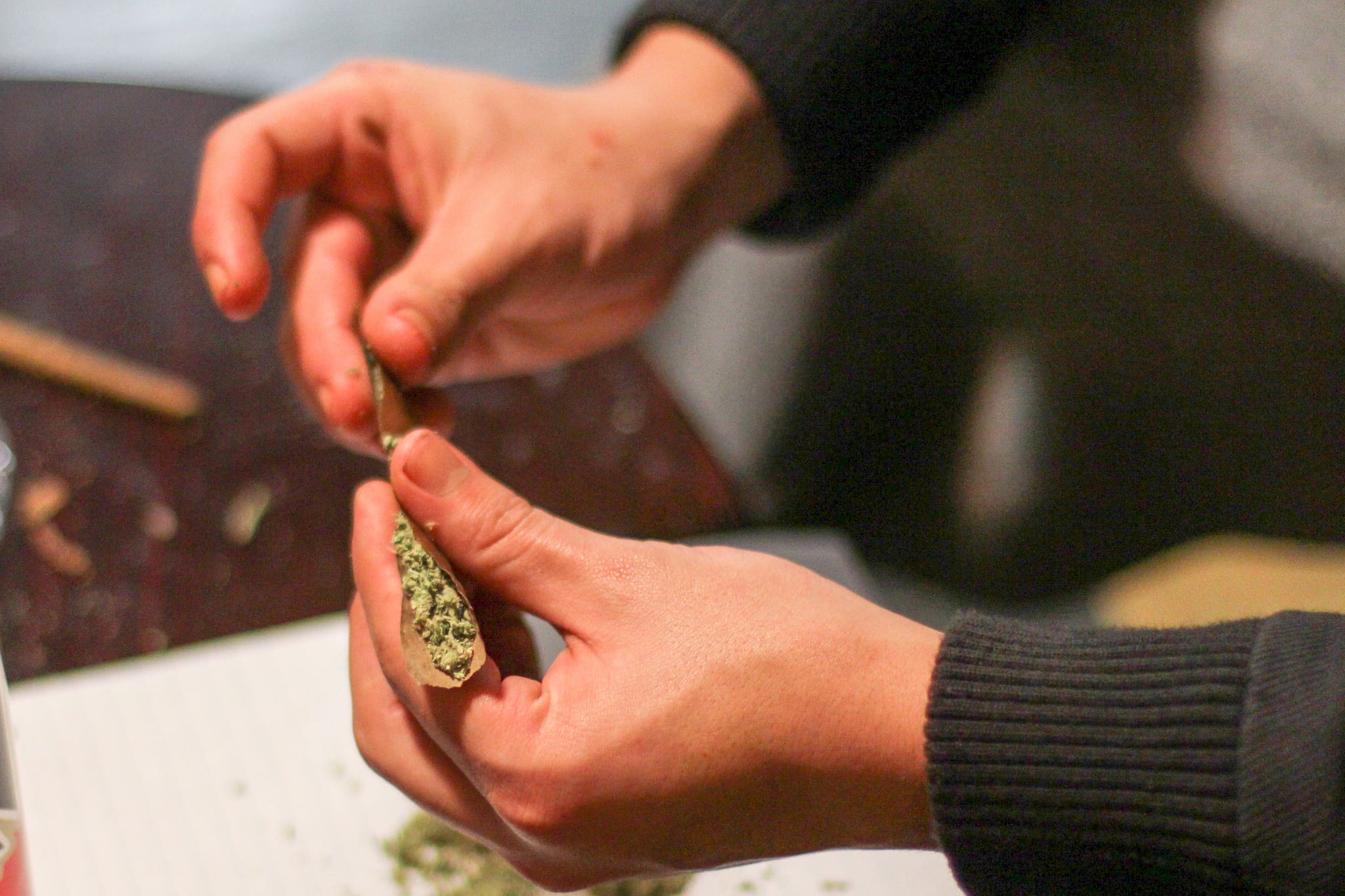
The Food and Drug Administration (FDA) is considering a petition raising concerns about the alleged “significant harm” that a drug testing device for marijuana metabolites in hair could cause if employers or law enforcement administer it under the mistaken impression it proves a person actually used cannabis rather than was exposed to secondhand smoke from someone else.
The petition was submitted last week by Harmed Americans for Reform in Medical-Device Safety (HARMS), a non-profit organization focused on medical device safety founded by three experts at Northeastern Law and Tufts Medical Center. HARMS isn’t exclusively focused on cannabis issues, but the organization said an FDA-approved cannabinoid hair testing device created by the Psychemedics Corporation raises serious concerns that the agency should address.
“Our petition requests that the FDA require clearer labeling to specify that the device can be used to detect only the presence of cannabinoid metabolites in hair and cannot be used for ‘identifying marijuana use,’” as the label implies,” HARMS’s Hooman Noorchashm said in a press release. “If firms use this 510(k) device for the express purpose of ‘identifying marijuana use,’ they are not using the device properly.”
Unlike conventional saliva, urine and blood tests for THC metabolites, determining whether a person used cannabis based on hair samples is uniquely complicated because secondhand smoke exposure could be enough to lead to a positive result. HARMS is advising FDA to exercise its authority to revise the device’s labeling requirements to clarify that point.
Making that labeling change is “particularly important,” the experts said, because “the Psychemedics Device is marketed for identifying marijuana use in employment and insurance contexts, including by federal, state, and municipal law enforcement agencies.”
Cannabinoid metabolites “are detectable in hair in both purposeful use and in the case of inadvertent exposure,” the petition, which FDA has acknowledged it received, said. “So while hair testing can detect cannabinoids, it cannot definitively confirm marijuana use because ‘external contamination’ is always possible.”
While other standard THC tests can more definitively demonstrate past usage of cannabis, “hair testing of the kind used in the Psychemedic’s Device detects THC-COOH over a longer period (months) and faces additional challenges, including false positives from passive exposure (e.g., inadvertent inhalation of marijuana smoke), as well as variability in cannabinoid incorporation due to hair type, hair treatments, and growth rates.”
“Given the unreliability of hair testing to accurately identify marijuana use, the FDA should evaluate the Psychemedics label or labeling of hair testing for cannabinoids,” it says. “These concerns have real-world impact. For example, the Psychemedics Device is used in employment settings, particularly for law enforcement officers.”
“Because positive test results may reflect only passive exposure rather than intentional marijuana use, consumers (employers) may erroneously believe that a positive result definitively proves marijuana use when it showed only marijuana exposure. This kind of misunderstanding can cause significant harm to individuals who are deemed marijuana users, and may result in inappropriate medical care or adverse employment decisions. To ensure consumers and users understand the limitations of the Device, the FDA should undertake the requested actions.”
HARMS’s David Simon said that the ‘labeling and instructions for use are a crucial component of a device that is supposed to provide accurate information to consumers and users.”
HARMS filed a citizen’s petition to require the FDA to ensure clear labeling on a device that detects the presence of cannabinoids in hairhttps://t.co/ezJCmA1T5a
— David A. Simon (@david__simon) October 17, 2025
“The current instructions for use are confusingly worded, and do not achieve this goal,” he said. “Most worryingly, people’s livelihoods may be on the line if the test is not used properly.”
The petition asks FDA to recommend or order Psychemedics to revise the device’s instructions for use to read: “The Psychemedics Microplate EIA for Cannabinoids in Hair is an enzyme immunoassay (EIA) for the preliminary qualitative detection of cannabinoid metabolites in hair using a 11-nor-9-Carboxy- Δ9-THC calibrator at a cut off of 10 pg/10 mg hair.”
As an alternative, it suggests that FDA could order the company to “provide a disclaimer on the Device that it does not identify whether any test subject used marijuana but only detects the presence or absence of cannabinoid metabolites in hair, which could have occurred without the subject using marijuana.”
Marijuana Moment reached out to Psychemedics for comment, but a representative was not immediately available.
As the state legalization movement has continued to expand, the complications around cannabis drug testing policies have also gained increased attention.
In July, for example, a Rutgers University law professor published a commentary investigating how roadside tests for marijuana impairment that are widely used by police departments across the U.S. are “inadequate.” He urged policymakers to take a more scientifically robust approach to transportation safety while relying less on law enforcement’s ostensible expertise.
There’s another wrinkle to the cannabis testing debate: As acknowledged by a U.S. Department of Justice (DOJ) researcher, it’s unclear whether a person’s THC levels are even a reliable indicator of impairment.
Last October, a study preprint posted on The Lancet by an eight-author team representing Canada’s Centre for Addiction and Mental Health, Health Canada and Thomas Jefferson University in Philadelphia identified and assessed a dozen peer-reviewed studies measuring “the strength of the linear relationship between driving outcomes and blood THC” published through September 2023.
The issue was also examined in a federally funded study last year that identified two different methods of more accurately testing for recent THC use that accounts for the fact that metabolites of the cannabinoid can stay present in a person’s system for weeks or months after consumption.
Photo courtesy of Martin Alonso.

Author: mscannabiz.com
MScannaBIZ for all you Mississippi Cannabis News and Information.
featured
Wisconsin Lawmakers Rally for Medical Cannabis Legalization in Committee Hearing
Published
9 hours agoon
October 22, 2025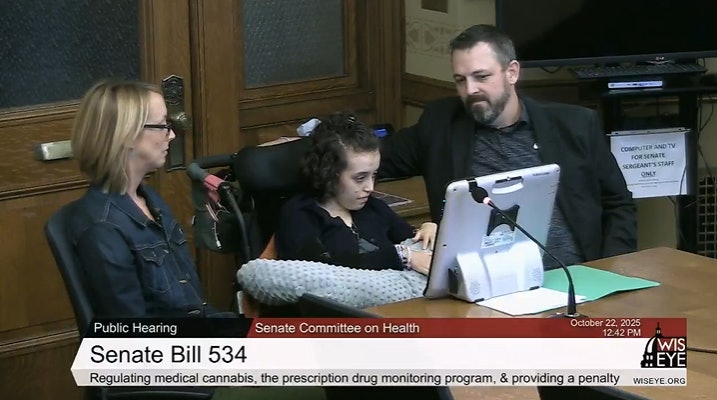
Wisconsin state Sen. Patrick Testin watched his grandfather, Blair Testin, a “big guy,” waste away after undergoing a series of chemotherapy treatments for lung and bone cancer that robbed his appetite.
This was in the 1990s, when California was the lone state in the nation to legalize medical cannabis. Yet the Testin family made the difficult decision to go outside the law and provide the elder Testin an alternative to pharmaceutical medicine more than 25 years ago.
Testin has been sharing the story of his grandfather for more than six years now, but his most recent testimony came Oct. 22 before the Wisconsin Senate Committee on Health, as the Badger State’s cannabis laws remain among the most restrictive in the nation, with no medical program to provide legal access to patients in need.
Testin gathered his emotions before retelling the story.
“It gave him his appetite back, and it gave him time that we probably otherwise would not have had,” Testin said Wednesday in Madison. “That story is not unique to mine. We have heard this from countless families all across the state, which is why I believe it’s time for us to enact a sensible medical cannabis program here in the state.”
A Republican from Stevens Point, Testin is rallying to make Wisconsin the 41st state to legalize medical cannabis via the passage of Senate Bill 534, legislation he’s sponsoring alongside Senate President Mary Felzkowski, R-Tomahawk.
Rep. Patrick Snyder, R-Weston, is sponsoring the proposal in the lower chamber.
The legislation intends to create an Office of Medical Cannabis Regulation to oversee a licensed marketplace and to establish and manage a patient and caregiver registry, allowing patients with qualifying conditions to access cannabis, including those with cancer, seizures or epilepsy, glaucoma, severe chronic pain, severe muscle spasms, severe chronic nausea, Parkinson’s disease, multiple sclerosis, inflammatory bowel disease, and any terminal illness with a probable life expectancy of less than one year.
“Illness does not discriminate. It affects people from all walks of life,” Testin said. “There is no doubt that each and every one of us knows someone that has suffered through an illness and struggled to find ways to make it through each day. While there are often medications that doctors could prescribe to help combat these illnesses, many come with side effects that can make living a normal life much more difficult.”
Felzkowski, 62, who was 40 years old when she was diagnosed with breast cancer and had a double mastectomy, knows those side effects personally. Ten years later, she was diagnosed with Stage 4 breast cancer.
Like Testin, Felzkowski also gathered her emotions before sharing her testimony with committee members.
“During that treatment, I lived on opioids,” said Felzkowski, who used prescription drugs for nine months to help with her pain. “The side effects of opioids are something nobody should have to live through because you take drugs; you take the opioids to control the pain so you can function through the day. … I remember sobbing to my oncologist, saying, ‘I don’t want to be a drug addict.’ And he said, ‘Well, we’ll worry about that after you survive.’”
Today, 12 years later, Felzkowski’s oncologist tells her that legalizing medical cannabis would help a lot of people by providing another tool in the toolbox.
“Here we are sitting in our ivory tower denying that for people that really need it, and it’s wrong that we’re doing that,” she said. “[It’s] not a silver bullet, but for the people out there that need it, it is that silver bullet.”
Under S.B. 534, qualifying medical cannabis patients must have written confirmation from a health care prescriber that the prescriber established a bona fide relationship with the patient. Dispensaries would be required to employ pharmacists who consult with first-time patients or caregivers to recommend daily dosages and review a patient’s medical records under the state’s Prescription Drug Monitoring Program.
Home cultivation and smokable cannabis (flower, pre-rolls, etc.) would be prohibited under the legislation.
The Senate Health Committee also took testimonies from the public on Wednesday.
Nora Lowe, a 17-year-old with a rare genetic neurological disorder called Rett syndrome, was accompanied by her parents, Megan and Josh Lowe. Nora testified through a computer audio recording.
“It affects everything I try and do,” she said. “Just like any 17-year-old, my body just doesn’t want to cooperate.”
Nora first began advocating for patient access to medical cannabis when she was 10. Seven years later, she now questions why she’s still asking for medicine that 86% of Wisconsin voters think she should have access to, according to a February 2024 survey conducted by Marquette Law School pollsters.
“My friends with Rett syndrome who use medical cannabis actually sleep through the night and see extensive relief from painful muscle spasms. Why can’t I get relief from mine?” Nora asked lawmakers. “My friends who have access to cannabis see profound improvements in their therapies and communication skills. Why can’t I experience the same types of advancement of skills? My friends with Rett syndrome who use medical cannabis are able to regulate their movements and breathing patterns, so they are more engaged in social situations. I want that. I want my breath-holding episodes to stop. I believe that I deserve the same opportunities to improve my quality of life; don’t you?”
The 17-year-old said both Democrats and Republicans agree that people like her deserve medical cannabis.
“Yet we are still at the same place we were when I was 10 years old,” Nora said.
While Republicans who control both chambers of the Wisconsin Legislature agreed last year that they should legalize medical cannabis, party leaders disagreed on the right path forward.
In 2024, Assembly Speaker Rob Vos, R-Rochester, backed a plan that called for state-run dispensaries, but that plan didn’t sit well with Senate Majority Leader Devin LeMahieu, R-Oostburg. The reform proposal died early in the session.
Snyder, the Assembly sponsor of S.B. 534, told the Senate Health Committee members on Wednesday that he’s going to twist the arm of Rep. Clint Moses, R-Menomonie, who chairs the Assembly Health Committee, to provide a hearing on the legislation.
“Let’s have it,” Snyder said. “Don’t listen to inside forces. Why are people so afraid?”
The intent is to advance language that can pass through both houses, Felzkowski said.
Testin said the legislation is up against political dynamics, both inside and outside the Legislature, that the sponsors have to navigate.
“Our hope is that this is a starting point in the conversation to get us to a point where we can get individuals comfortable with the concept, but more importantly, we have to start somewhere,” he said.

Author: mscannabiz.com
MScannaBIZ for all you Mississippi Cannabis News and Information.
featured
Massachusetts Campaign To Roll Back Marijuana Legalization Law Is ‘On Track’ To Make 2026 Ballot, Spokesperson Says
Published
11 hours agoon
October 22, 2025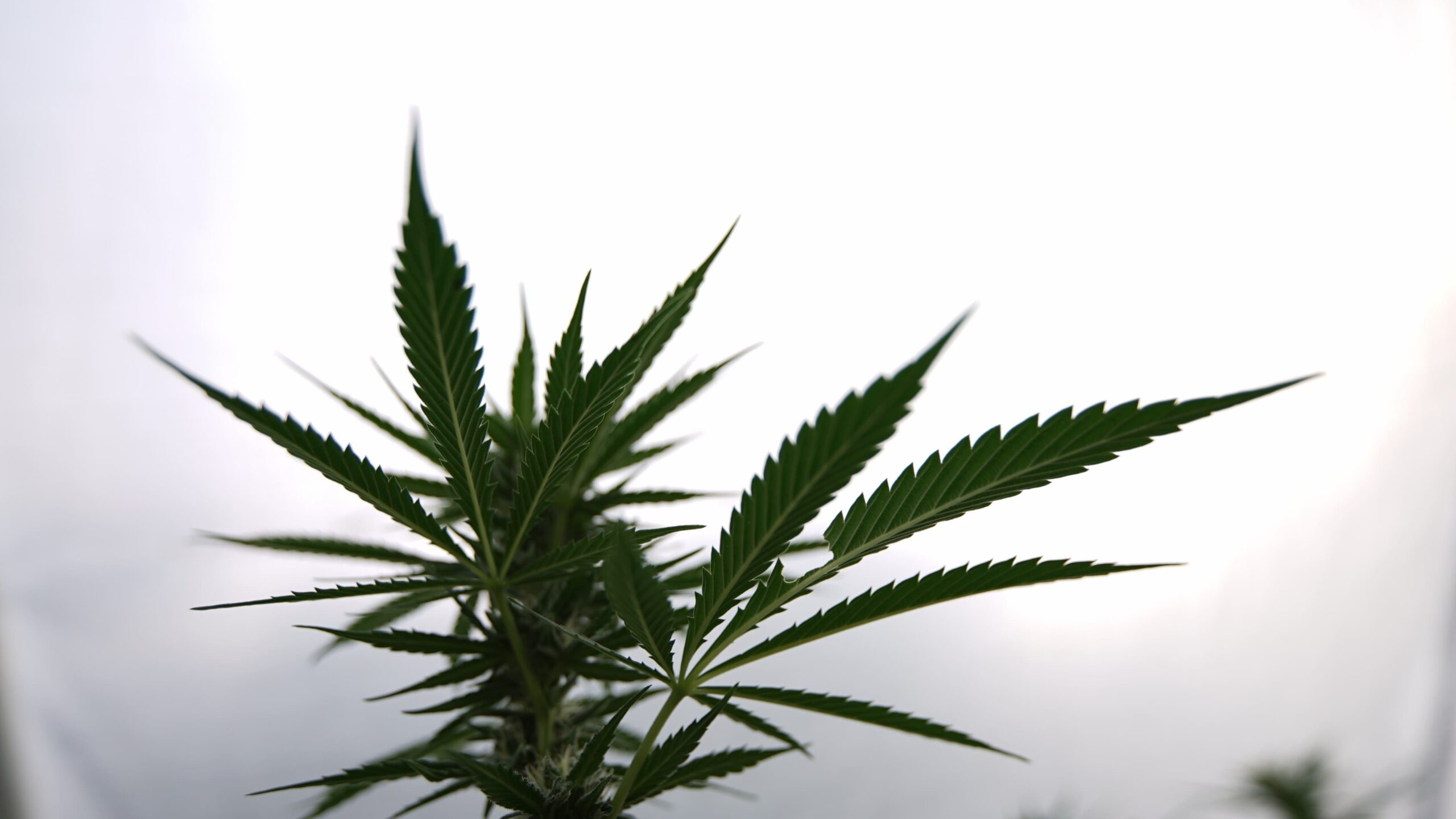
A Massachusetts campaign says it is “on track” to collect enough signatures to put an initiative on the 2026 ballot that would roll back key aspects of adult-use marijuana legalization in the state. Meanwhile, some in the cannabis reform community are raising concerns about alleged instances where voters are being approached by signature gatherers with misleading information before signing petitions.
About a month after Massachusetts Attorney General Joy Campbell (D) cleared the campaign for signature gathering by certifying the recriminalization proposal, spokesperson Wendy Wakeman said the process is “going well” as they work to collect 100,000 signatures by a December 3 deadline.
“It’s on track,” Wakeman told Cannabis Business Times, while acknowledging that the “whole process—the initiative petition process—isn’t easy.”
In order to potentially qualify for the ballot, the campaign will need to submit an initial batch of 74,574 valid signatures. Internally, prohibitionist advocates have determined that they need to collect around 100,000 “because there are two different vetting processes that the signature sheets, the petitions, will go through,” and so it’s important to have that cushion for those that are potentially invalidated.
“The process at every step is political,” Wakeman said, arguing that while the voters decisively approved legalization at the ballot in 2016, there’s a sizable population of health professionals, parents and educators who are angling for a reversal of the law.
More people are feeling the “impact that the growth of marijuana use has had on the quality of life, the increase in DUI stops, the increase in child poisonings and in pet poisonings,” she said. “There’s a group that coalesces around the idea that we moved too far too fast with marijuana legalization, and that it’s not working well for Massachusetts.”
When the attorney general’s office completed its review of about 50 proposed 2026 ballot measures, it certified two versions the recriminalization campaign submitted.
Both would eliminate the state’s commercial adult-use market while maintaining patient access under the medical cannabis program and continuing to allow lawful possession of up to an ounce of recreational marijuana. “Version A” contains language that would also cap THC content for medical marijuana, while “Version B” omits that policy.
Wakeman says the campaign is pursuing the latter initiative without the cap. “We’re focusing on a petition that rolls back recreational pot stores and the legality of home-grown recreational marijuana,” she said.
Under initiative—titled “An Act to Restore A Sensible Marijuana Policy”—adults 21 and older could still possess up to an ounce of cannabis, only five grams of which could be a marijuana concentrate product.
Possession of more than one ounce but less than two ounces would be effectively decriminalized, with violators subject to a $100 fine. Adults could also continue to gift cannabis between each other without remuneration.
But provisions in the state’s voter-approved marijuana law that allow for commercial cannabis retailers and access to regulated products by adults would be repealed under the proposal.
Adults’ right to cultivate cannabis at home would also be repealed.
Meg Sanders, CEO of the Massachusetts-based Canna Provisions, told Cannabis Business Times that the question of legalization in the commonwealth has already been answered.
“I believe the voters showed up in 2016 and stated exactly what they wanted to see, which was a regulated cannabis market for adults,” she said. “I really hope we don’t have to ask and answer it again.”
“I think prohibition in any form is a real threat, and I think we have to keep our eye on the ball and not assume and not just go about our merry way. We’ll talk about it with our customers. We’ll make sure that they’re very aware of it. Please ask them to tell their friends. I just feel like we don’t know what the money behind this initiative is. We don’t understand exactly what’s backing this, but in my opinion, any threat to freedom is a threat that we need to look at.”
On Tuesday, the editor in chief of the Massachusetts-based marijuana news site Talking Joints Memo shared that a friend of his was recently approached by a person allegedly collecting signatures for the campaign who he said significantly mischaracterized the proposal by suggesting it would “stop criminalizing weed once and for all.”
Others in the industry replied to the LinkedIn post with similar experiences. But for what it’s worth, one person also flagged that they’ve heard of recent instances where petitioners have been collecting signatures for a ballot measure that isn’t actually certified.
Marijuana Moment reached out to the campaign for comment, but a representative was not immediately available.
Meanwhile, the head of Massachusetts’s marijuana regulatory agency recently suggested that the measure to effectively recriminalize recreational cannabis sales could imperil tax revenue that’s being used to support substance misuse treatment efforts and other public programs.
If enough of the initial signature submissions are validated, the proposal will then go before the legislature, with lawmakers having until May 6 to enact it into law or propose a substitute. If they do not, organizers will then need to collect 12,429 additional valid voter signatures to put the measure on the ballot.
Whether the cannabis measures make the cut is yet to be seen. Voters approved legalization at the ballot in 2016, with sales launching two years later. And the past decade has seen the market evolve and expand. As of August, Massachusetts officials reported more than $8 billion in adult-use marijuana sales.
—
Marijuana Moment is tracking hundreds of cannabis, psychedelics and drug policy bills in state legislatures and Congress this year. Patreon supporters pledging at least $25/month get access to our interactive maps, charts and hearing calendar so they don’t miss any developments.![]()
Learn more about our marijuana bill tracker and become a supporter on Patreon to get access.
—
Regulators are also working to finalize rules to allow for a new cannabis consumption lounge license type, which they hope to complete by October.
Separately, in May CCC launched an online platform aimed at helping people find jobs, workplace training and networking opportunities in the state’s legal cannabis industry.
The legislature’s Joint Committee on Cannabis Policy in August approved bills to provide employment protections for marijuana consumers and expand the state’s medical cannabis program, in part by adding post-traumatic stress disorder (PTSD) and opioid use disorder to the list of qualifying conditions.
State lawmakers have also been considering setting tighter restrictions on intoxicating hemp-derived products and a plan to allow individual entities to control a larger number of cannabis establishments.
Also in Massachusetts, legislators who were working on a state budget butted heads with CCC officials, who’ve said they can’t make critical technology improvements without more money from the legislature.
Meanwhile, Massachusetts lawmakers recently approved a bill to establish a pilot program for the regulated therapeutic use of psychedelics. And two committees have separately held hearings to discuss additional psilocybin-related measures.
Photo courtesy of Chris Wallis // Side Pocket Images.

Author: mscannabiz.com
MScannaBIZ for all you Mississippi Cannabis News and Information.

FDA Weighs Petition On ‘Significant Harm’ Of Marijuana Hair Testing Device’s Positive Results From Secondhand Smoke

Wisconsin Lawmakers Rally for Medical Cannabis Legalization in Committee Hearing

Massachusetts Campaign To Roll Back Marijuana Legalization Law Is ‘On Track’ To Make 2026 Ballot, Spokesperson Says

Village Farms Introduces Industry-First, One-Way Aroma Valve in Cannabis Packaging

Ohio House Passes Bill To Remove Voter-Approved Marijuana Legalization Protections And Restrict Hemp Market

Sorting Robotics Becomes Cannabis Manufacturing’s First True Systems Integrator

Wisconsin Senators Hold Hearing On GOP Leader’s New Medical Marijuana Legalization Bill

Tariffs And Visas Add To The Cannabis Industry’s Misery

Rhode Island Cannabis Chair Steps Down; Adult-Use Dispensary Awards Months Away

How America Accidentally Legalized Lab Cannabis

New Hampshire Lawmakers Announce Plans For Marijuana, Psychedelics And Hemp Bills For 2026 Session

Metrc Announces In-Person Events in New York to Prepare Licensees For Track-and-Trace Implementation

Top Rhode Island Marijuana Regulator Steps Down Ahead Of Possible Campaign For Attorney General

Lifestyle Brand Cookies Launches in Brazil With Premium Wellness Products

Alcohol companies lobby Congress on cannabis drinks (Newsletter: October 22, 2025)

Millennials Are Spending Big on Luxury Travel

Ohio Lawmakers Advance Bill To Scale Back Voter-Approved Marijuana Law And Impose Hemp Regulations

Data Confirms Cannabis Is Safer Than Alcohol

American Council of Cannabis Medicine Unveils Major Industry Initiative to Expand Medical Cannabis Access

Scientists Develop New Class Of CBD Using A Common Kitchen Spice—Not Cannabis

Evidence About Burning Mouth Syndrome And Cannabinoids

Raw Garden Acquires ‘California Love’ to Grow Clean Cannabis Movement

Rhode Island Marijuana Officials Approve Timeline For Awarding New Dispensary Licenses

‘Rent-a-License’ Scheme Highlights New York Cannabis’s Track-and-Trace Problem

Alert: Department of Cannabis Control updates data dashboards with full data for 2023

Connecticut Appoints The US’s First Cannabis Ombudsperson – Yes there is a pun in there and I’m Sure Erin Kirk Is Going To Hear It More Than Once!

5 best CBD creams of 2024 by Leafly

Recreational cannabis on ballot for third time in South Dakota

EU initiative begins bid to open access to psychedelic therapies
New Study Analyzes the Effects of THCV, CBD on Weight Loss

Free delta-9 gummies from Bay Smokes

5 best autoflower seed banks of 2024 by Leafly

Discover New York’s dankest cannabis brands [September 2024]

May 2024 Leafly HighLight: Pink Runtz strain

Press Release: CANNRA Calls for Farm Bill to Clarify Existing State Authority to Regulate Hemp Products

5 best THC drinks of 2024 by Leafly

Local medical cannabis dispensary reacts to MSDH pulling Rapid Analytics License – WLBT

6 best CBD gummies of 2024 by Leafly

Curaleaf Start Process Of Getting Their Claws Into The UK’s National Health System – With Former MP (Resigned Today 30/5/24) As The Front Man

Horn Lake denies cannabis dispensary request to allow sale of drug paraphernalia and Sunday sales | News

5 best delta-9 THC gummies of 2024 by Leafly

Mississippi city official pleads guilty to selling fake CBD products

The Daily Hit: October 2, 2024

Nevada CCB to Accept Applications for Cannabis Establishments in White Pine County – “Only one cultivation and one production license will be awarded in White Pine County”

5 best THCA flower of 2024 by Leafly

Weekly Update: Monday, May 13, 2024 including, New Guide for Renewals & May Board meeting application deadline

6 best hemp pre-rolls of 2024 by Leafly

PRESS RELEASE : Justice Department Submits Proposed Regulation to Reschedule Marijuana
Trending
-

 California Cannabis Updates1 year ago
California Cannabis Updates1 year agoAlert: Department of Cannabis Control updates data dashboards with full data for 2023
-

 Breaking News1 year ago
Breaking News1 year agoConnecticut Appoints The US’s First Cannabis Ombudsperson – Yes there is a pun in there and I’m Sure Erin Kirk Is Going To Hear It More Than Once!
-

 best list1 year ago
best list1 year ago5 best CBD creams of 2024 by Leafly
-

 Business1 year ago
Business1 year agoRecreational cannabis on ballot for third time in South Dakota
-

 Business1 year ago
Business1 year agoEU initiative begins bid to open access to psychedelic therapies
-

 cbd1 year ago
cbd1 year agoNew Study Analyzes the Effects of THCV, CBD on Weight Loss
-

 Bay Smokes1 year ago
Bay Smokes1 year agoFree delta-9 gummies from Bay Smokes
-

 autoflower seeds1 year ago
autoflower seeds1 year ago5 best autoflower seed banks of 2024 by Leafly



